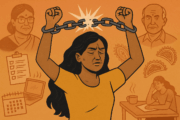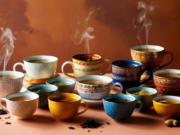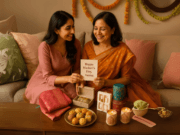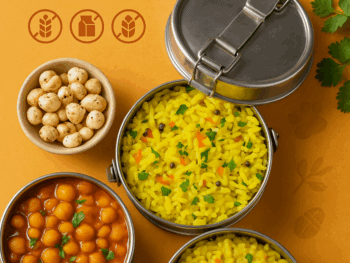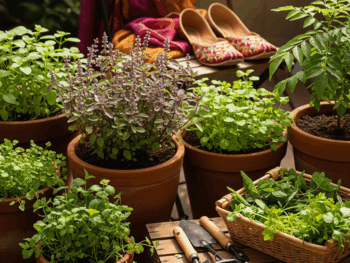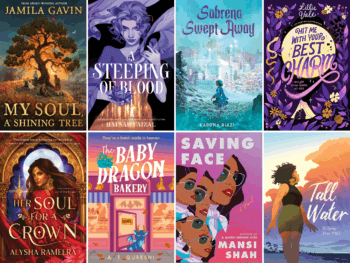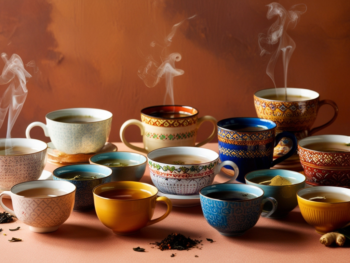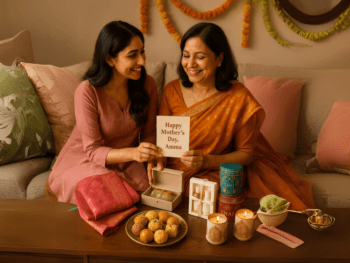
Women’s Equality Day 2018: South Asian Women Are Barely Represented In Government And That’s A Problem
Lifestyle Aug 27, 2018
Women’s Equality Day took place on Sunday August 26, 2018. This day is celebrated each year to recognize the 19th Amendment addition to the U.S. Constitution, which enabled and empowered the voices of women as it granted us the right to vote in the United States on August 26, 1920. Sure we got the vote, but South Asian women are barely represented in government, and that’s a problem.

Since then, it’s safe to say that the fight for women’s rights has made significant strides over the years and the impact has been evident both within the domestic sphere and outside, in the workplace. And so, it’s curious to note, when reviewing the statistics of women in politics, that there is an under-representation in parliament, particularly in South Asia.
The Breakdown:
To provide a more holistic picture, let’s dig deeper and hold a magnifying glass over what this under-representation looks like for individual South Asian countries, according to UN Women, as of 2017 (disclaimer: the results may make your eyebrows permanently disappear into your hairline):
- India: In the lower or single house of parliament, there are approximately 64 women out of 542 seats or 11.8%, and there are 27 women out of 245 seats or 11% in the upper house or senate.
- Sri Lanka: Sri Lanka does not fare much better than India with 13 women being represented in the lower or single house of parliament out of 225 seats, which amounts to just 5.8%.
- Pakistan: In the lower or single house of parliament, there are about 70 seats that women have filled out of 340 (20.6%) and 19 women out of 104 seats (18.3%) make up the upper house or senate.
- Bangladesh: Similarly, in the lower or single house of parliament, women hold approximately 71 out of 350 seats (20.3%).
- Nepal: Coming in strong, in the lower or single house of parliament, about 176 seats are filled by women out of 595 (29.6%).
- Afghanistan: Even better, in the lower or single house of parliament, out of 249 seats there are 69 (27.7%) women at the table, while in the upper house of senate there are 21 out of 68 seats (30.9%).

Women In Parliament And Women In The Workforce:
With these stats in mind, let’s shift gears to make a different connection: how the representation of women in parliament is linked to the representation of women in the workforce.
In South Asia, “women’s mean labo[u]r force participation rate is [a whopping] 40 percent.” This is the cumulative result of a culture that reinforces gendered roles and stereotypes that often prioritizes men. For instance, although there has been an increase of women attaining higher education, tradition limits them to the confines of the home to safeguard a woman’s ‘purity,’ in terms of their exposure to men outside of their spouses and their work is often undervalued within the home. For women who are able to work outside of the household, they are faced with other barriers, like employers passing on them for fear of interference by families (such as when the woman has to leave her home) or offering them jobs at lesser wages.

Nonetheless, successful parliaments, according to News Deeply, “…are markers of democratic and accountable governance.” As such, they should ideally work to “leave no one behind,” including women.
However, according to CNN, when there is female leadership in place, there is more likely to be efforts made to address issues pertaining to women. For instance, women in parliament are able to influence budget items, “…either through gender budgeting efforts or simply…showing how women in the developing world experience issues differently than men.” As well, when women are in positions of power, they are better able to sway necessary amendments to policies, such as “…parental leave, child care and pay.” Most importantly though, women in power are better able to disrupt traditional narratives and customs to pave the way for other women, be it within the workforce or their communities.

Don’t believe me quite yet?
No problem – let’s check out some examples of impactful female leadership (#crushingit):
First, according to the World Bank, the percentage of females (over 15 years old) in the workforce is at 83% in Nepal, as of 2017, which may not directly be the result of having a high rate of female leadership, but it is certainly a contributing factor.
Meanwhile, in India, although the rate of female representation in parliament is low and participation in the job market is only 25%, there are still key instances of female leadership making waves. For example, “research on panchayats (local councils) in India found that the number of drinking water projects in areas with female-led councils was 62% higher than in those with male-led councils.”
This demonstrates that when there is a strong female foundation at the top, it makes way for progress for women and the goals that they set their minds to.
So… What Should We Do?
The crux of the matter is that women have valuable ideas and perspective to bring to the table, and so governments need to devise a plan to shake-up the deterrents South Asian women in politics often face, according to the Inter-Parliamentary Union:
- “Domestic responsibilities
- Prevailing cultural attitudes regarding the roles of women in society
- Lack of support from family
- Lack of confidence
- Lack of finance”
To help break down these barriers, News Deeply argues that governments they need to establish “…a gender agenda [that includes] the lack of women parliamentarians, inadequate political will and expertise, constraints in adhering to party discipline, inadequate policies, operating procedures, gender-based mechanisms, discriminatory attitudes and inadequate links with women’s [civil society organizations] and constituencies.”

In addition to challenging the deeply rooted social and cultural values of South Asian society (and even globally) when it comes to women in politics, there is also a continued need to encourage female voters to exercise their right to do so.
(On another note, let’s pause for a moment to celebrate the fact that in Pakistan’s most recent election there was 47% of female voter turnout, 38% in Afghanistan in 2014, and 65.63% in India in 2014. That’s amazing! #AmIRight?!)
That said, it is crucial that women continue to exercise their right to vote (and ultimately make their own decisions), “…without being dictated by men and community elders” as it is a necessary step in the quest to further amplify female South Asian voices.
Looking Toward The Future:
First, it’s important to highlight that South Asia has had many female heads of state, such as Sheikh Hasina Wazed, the Prime Minister of Bangladesh, Chandrika Kumaranatunga, the President of Sri Lanka, and Indira Gandhi, India’s first female Prime Minister, to name a few.
However, more is still required to really continue to pave the way for change, with regard to turning the patriarchal values and culture that is embedded into the social fabric of South Asia on its head. It’s important to note that “a social transformation mainstreaming marginalized issues,” such as better access to education, addressing violence against women in the public and private sphere, participation in the labour force, and more, “is often accompanied with women’s greater role in politics.”
With this hope in mind, the involvement of women in politics and the unique leadership they are able to provide is a #majorkey for the advancement of women. And so, it is important to encourage leadership in young girls to ensure that they are able to strive for more and lead healthier and fulfilling lives, while also cultivating a cohort of young women who are not afraid to #pressforprogress and changes that are, not only, necessary, but long overdue in South Asia.
Main Image Photo Credit: www.browngirlmagazine.com
Devika Goberdhan | Fashion Editor
Author
Devika (@goberdhan.devika) is an MA graduate who specialized in Political Science at York University. Her passion and research throughout her graduate studies pushed her to learn about and unpack hot button issues. Thus, since starting at ANOKHI in 2016, she has written extensively about many challe...






